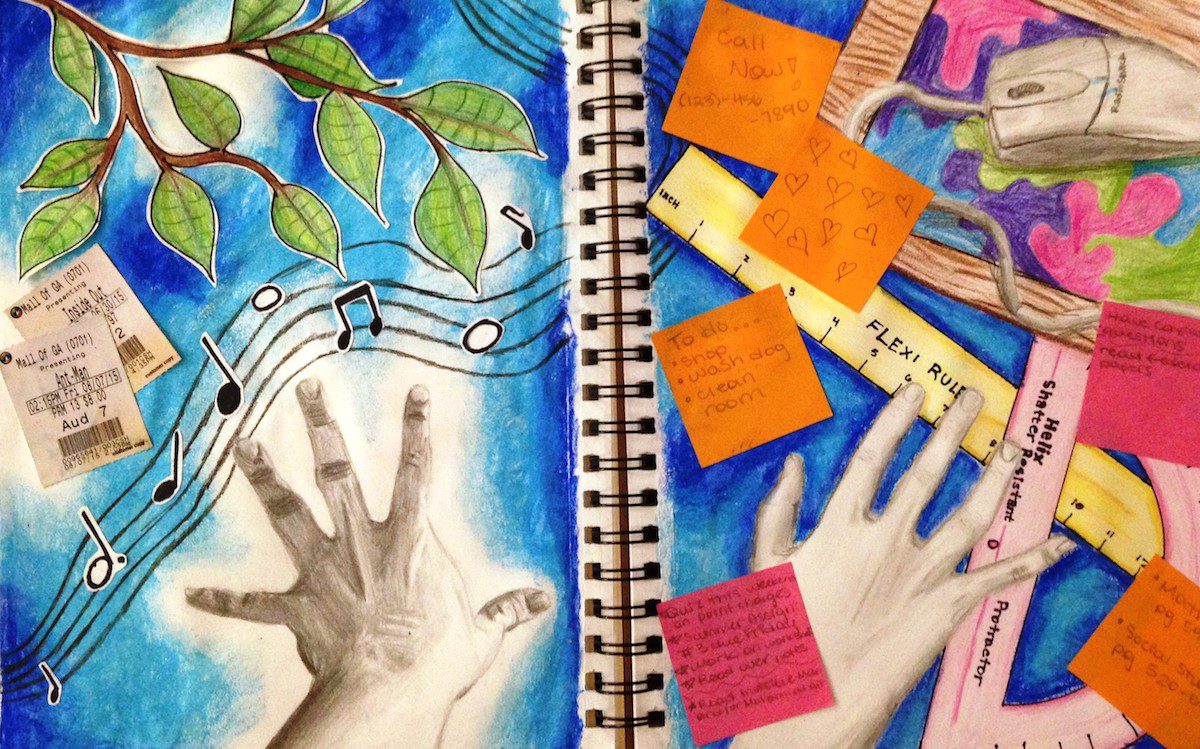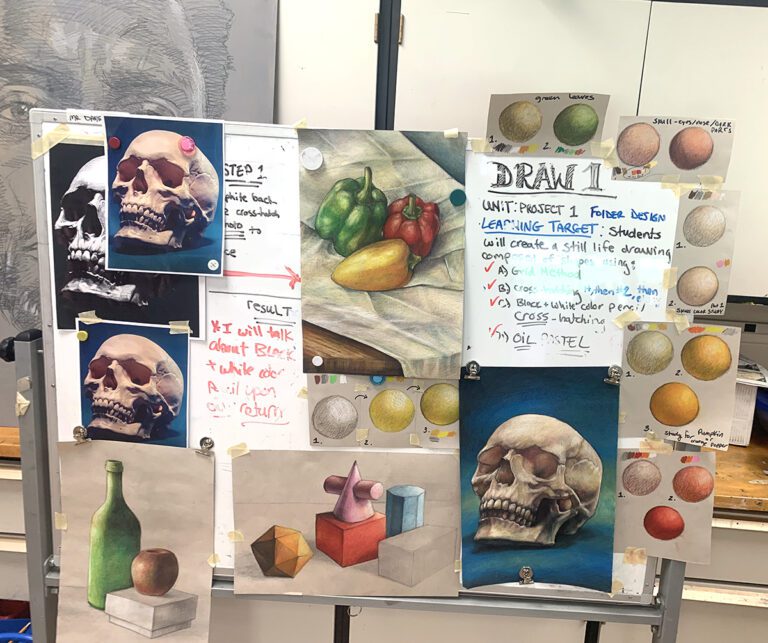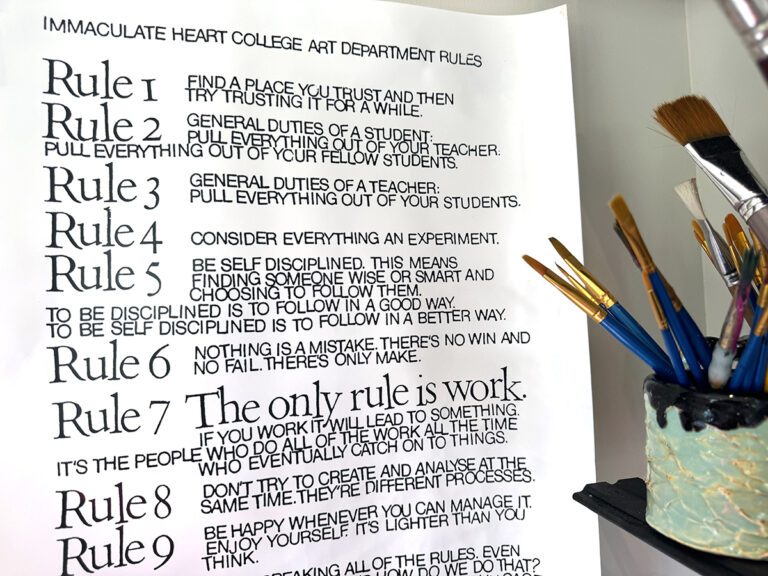When I started at the secondary level, I quickly realized my students needed to be encouraged to practice their drawing and composition skills. Telling them to practice wasn’t cutting it, but I wasn’t sure what the best solution might be.
I wanted to hold my kiddos accountable for their learning in an enjoyable way. I came up with prompt-based weekly visual journal assignments. These assignments not only gave students inspiration to work on their technical skills, but also became important creative outlets. Plus, it allowed me to see how they were developing as artists. It was a win-win-win experience!
Let’s take a closer look at how visual journals promote drawing and creative thinking skills in an incredible way.
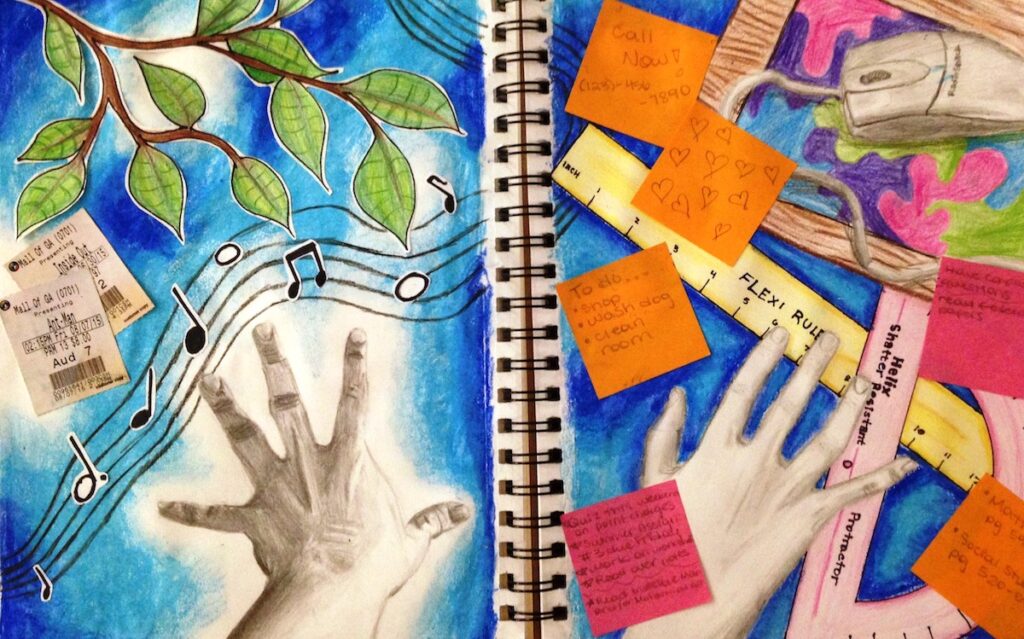
Introducing the Concept
In my room, my students and I started early in the year by discussing why artists keep journals. I focused on how my students’ journals could become a storehouse of ideas to pull from throughout the class. I told them the work they do in these journals could push their class projects to the next level.
Explaining the Rules
Then, I provided students with a handout that told them exactly how their journals would be assessed.
In my classroom, I looked for 3 things in each entry:
- Direct observational drawing
- Collage
- Text
There were no hard and fast rules on how much collage or text needed to be incorporated. However, I did encourage students to make at least 50 percent of the work drawing. This way, I knew they were practicing drawing from life. I also wanted them to work on arranging the work into creative compositions.
If you’re looking for ways to help students incorporate text into their work, you may want to check out the PRO Learning Pack, Implementing Sketchnotes in the Art Room found in PRO Learning. There is an entire section devoted to the art of typography!
Giving the Prompts
In my intro classes, I gave open-ended prompts such as, “Who Am I?” “Invent a New Object,” “When I Was Younger,” or “Kitchen Items.” I also made sure to build in a “Free Choice” week. I required all of their works be on a single page.
You can see how two students responded to the prompt, “Draw a chair,” below.
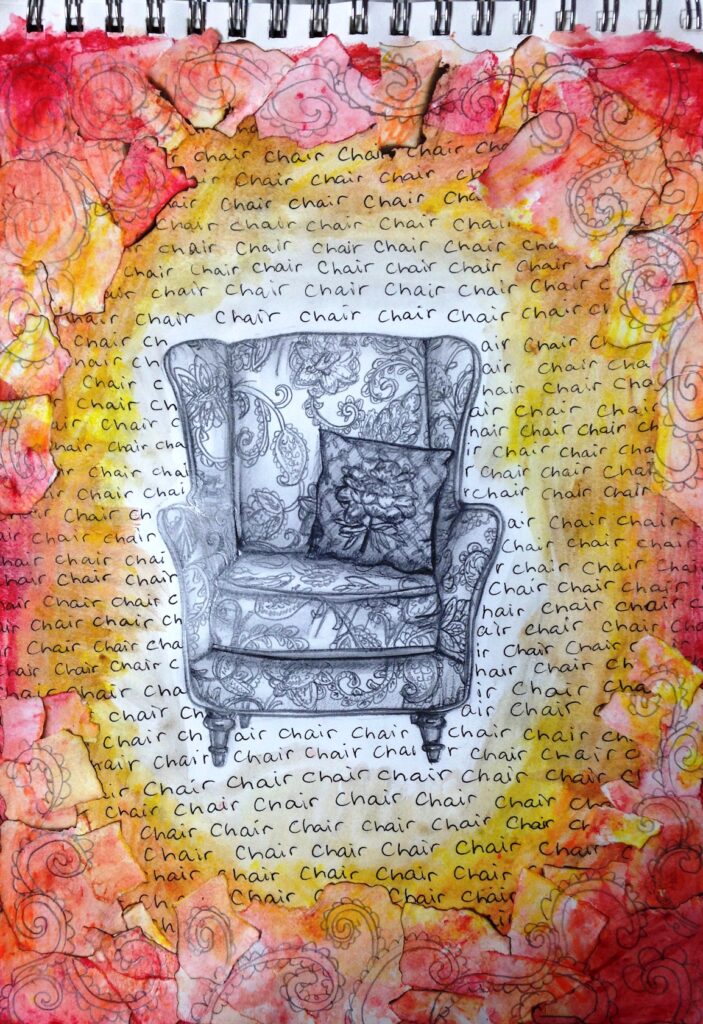
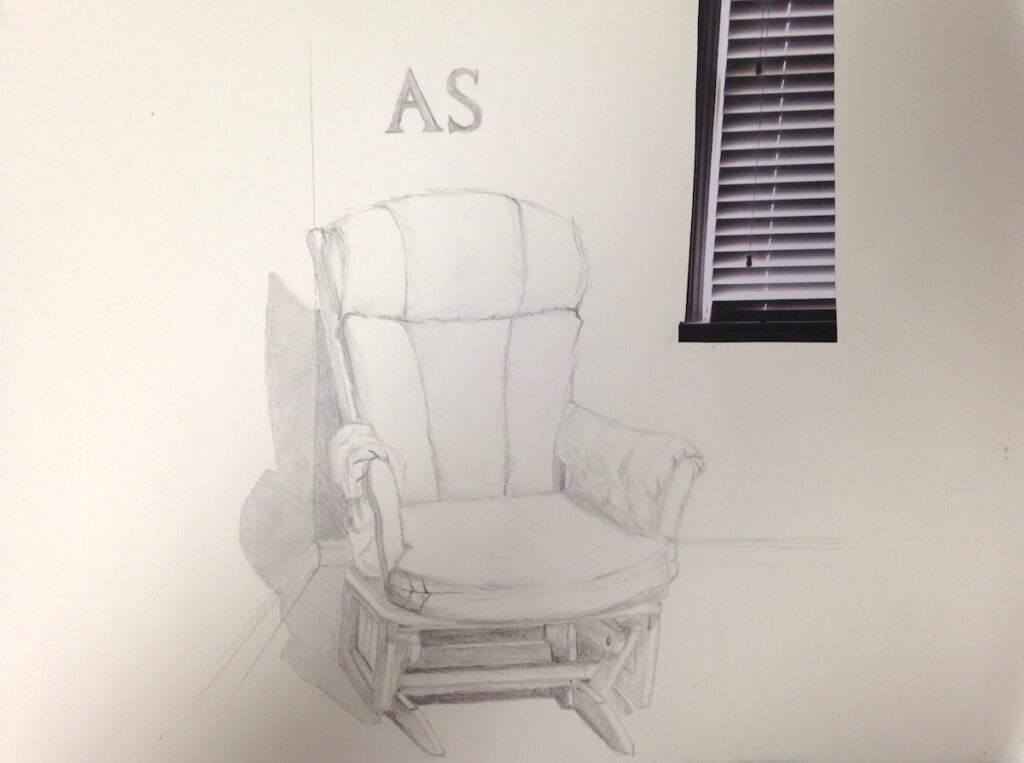
In contrast to my beginning students, my Art II students received single-word prompts. These were things like, “Me,” “Rip,” “See,” “Joy,” “Eat” or “Spirit.” I also required a two-page spread for each entry. The added challenge of making the work unified even with a spiral or binding holding the pages together is something that helped them when considering their class projects as well.
Here is how a few students handled the prompt, “Me.”
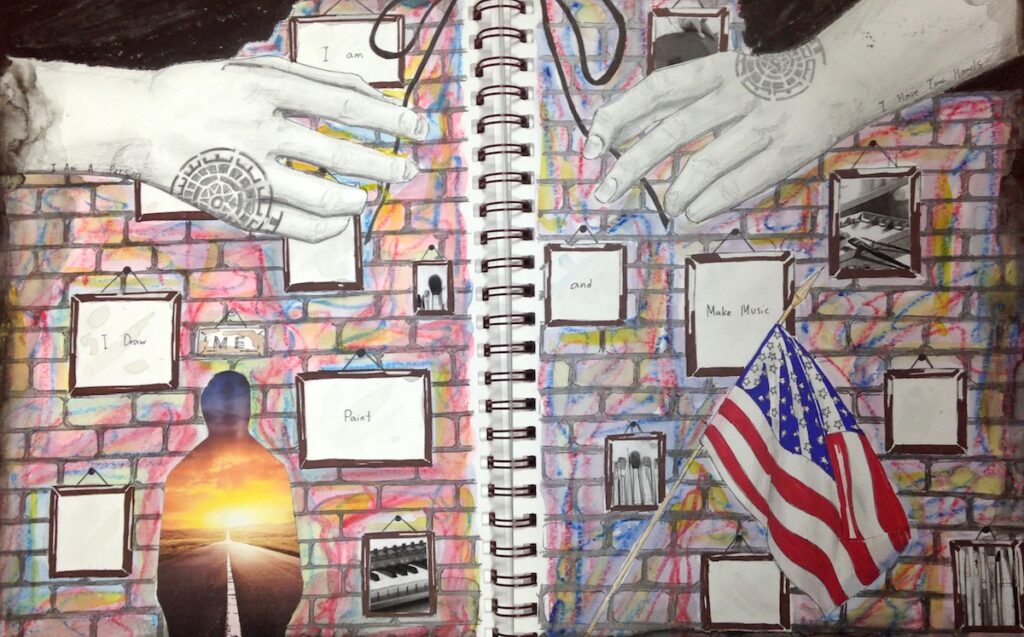
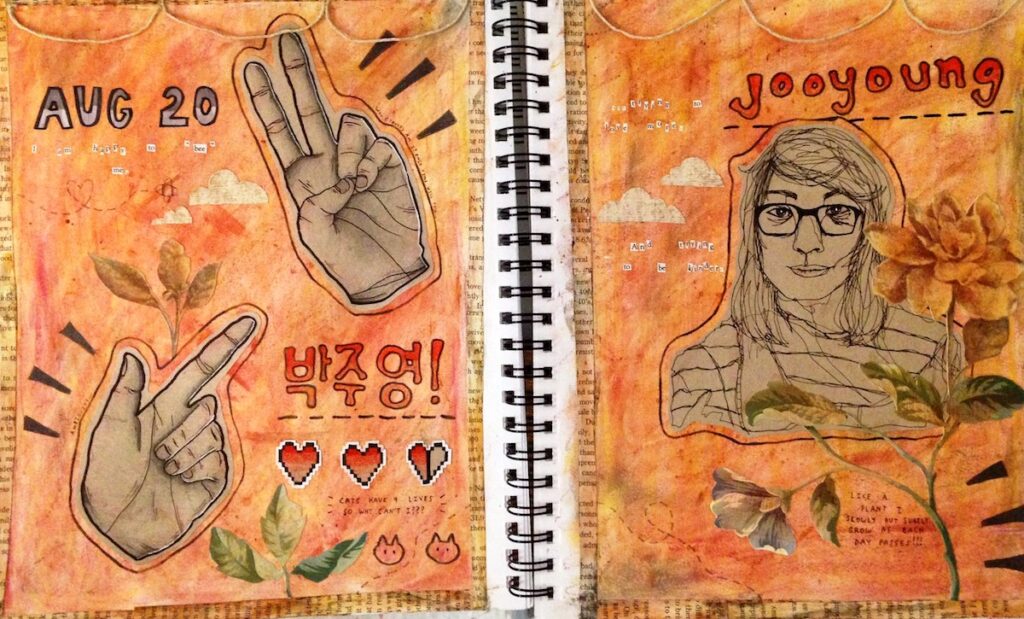
If you’d like to get started with visual journals in your room, download the list of 50 prompts below!
The Power of Modeling
I made sure I was working on my visual journals with the same prompt as often as possible. I think it’s important for our students to see us as artists, and working alongside them is a great way to model your expectations for your students.
Every few weeks we had a “Journal Day.” On these days, my students and I grabbed our journals and spent the class period working and chatting. It’s a great way to get to know students better!
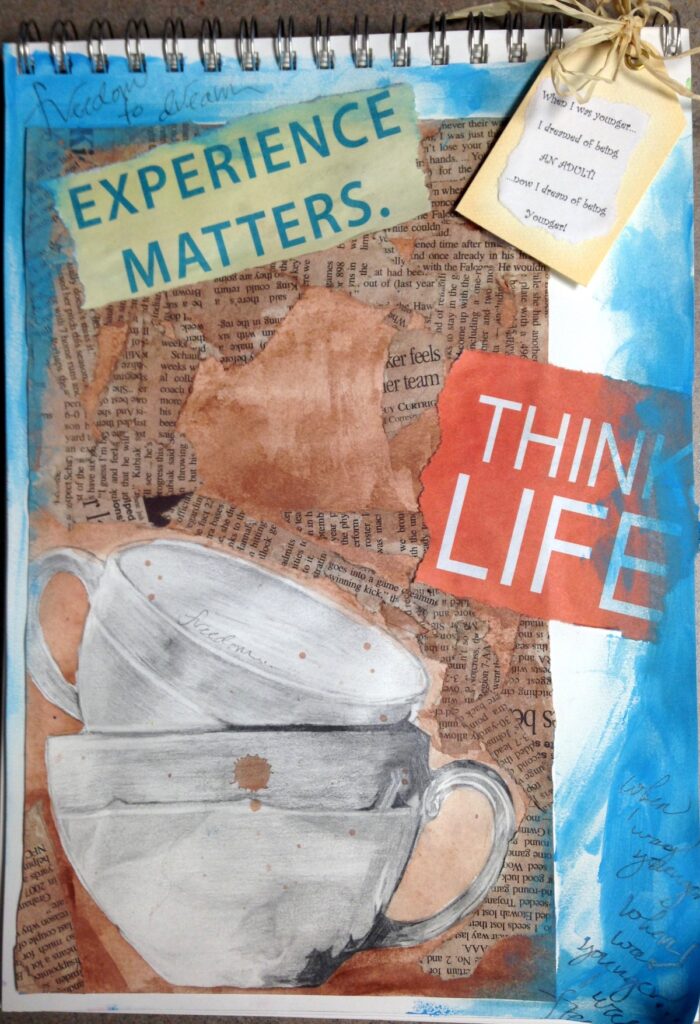
The Logistics
If you’re working on a semester schedule, I suggest giving twelve to fourteen journal assignments. With my beginning students, each entry stood on its own. However, with older students you can take things to the next level by having them work with a theme. A theme adds another layer of critical thinking as they must figure out how to make the prompts connect. This is the type of divergent thinking experience we should be giving our students as often as possible!
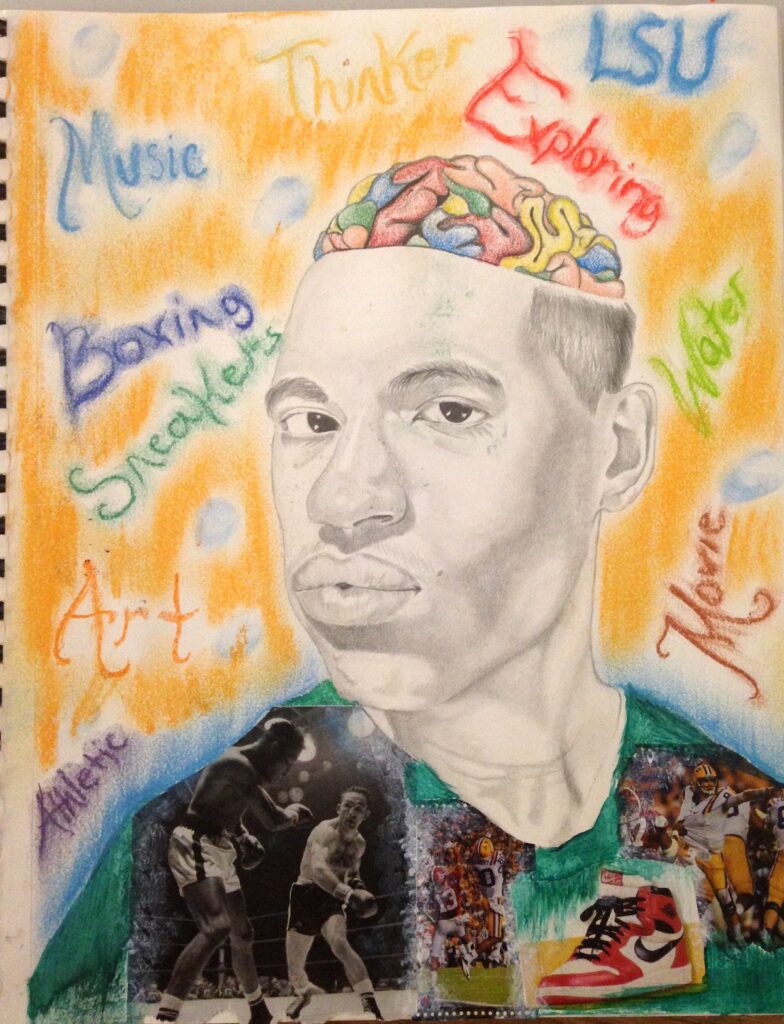
You can also assign visual journals in courses where most of the work is 3-D. In my case, I implemented Art History Visual Journals so students could research and learn about the 3-D master artists that were on their county assessment final exam. These research-based journals were beautifully done, and when student test scores improved I knew we were onto something big!
How to Handle Grading
I was often asked, “How do you grade 188 visual journals a week?” I love this question because it’s one of the most fun aspects of this assignment.
I called students up to my stool every Monday during their studio class time, and we had a one-on-one conversation as we graded the work together using the rubric! If a student did an outstanding job, I snapped a photo and added it to a special Visual Journal Pinterest page.
You can check out a few links below!
We had wonderful chats about their progress. These quick meetings held students accountable, and I saw their work grow tremendously. They wanted good grades, they wanted to get better at their art skills, and they wanted me to snap a photo and put it on Pinterest! Each week, I found myself pinning more and more as students got stronger, which is the ultimate goal!
I used to love my Mondays because Mondays meant I had the opportunity to connect with my students as they shared their hard work with me via their visual journals. As I said, it’s a win-win-WIN activity!
How are you teaching visual journaling to your students?
Do you think using sketchbooks or journals is an important part of our student’s visual art education?
Magazine articles and podcasts are opinions of professional education contributors and do not necessarily represent the position of the Art of Education University (AOEU) or its academic offerings. Contributors use terms in the way they are most often talked about in the scope of their educational experiences.
